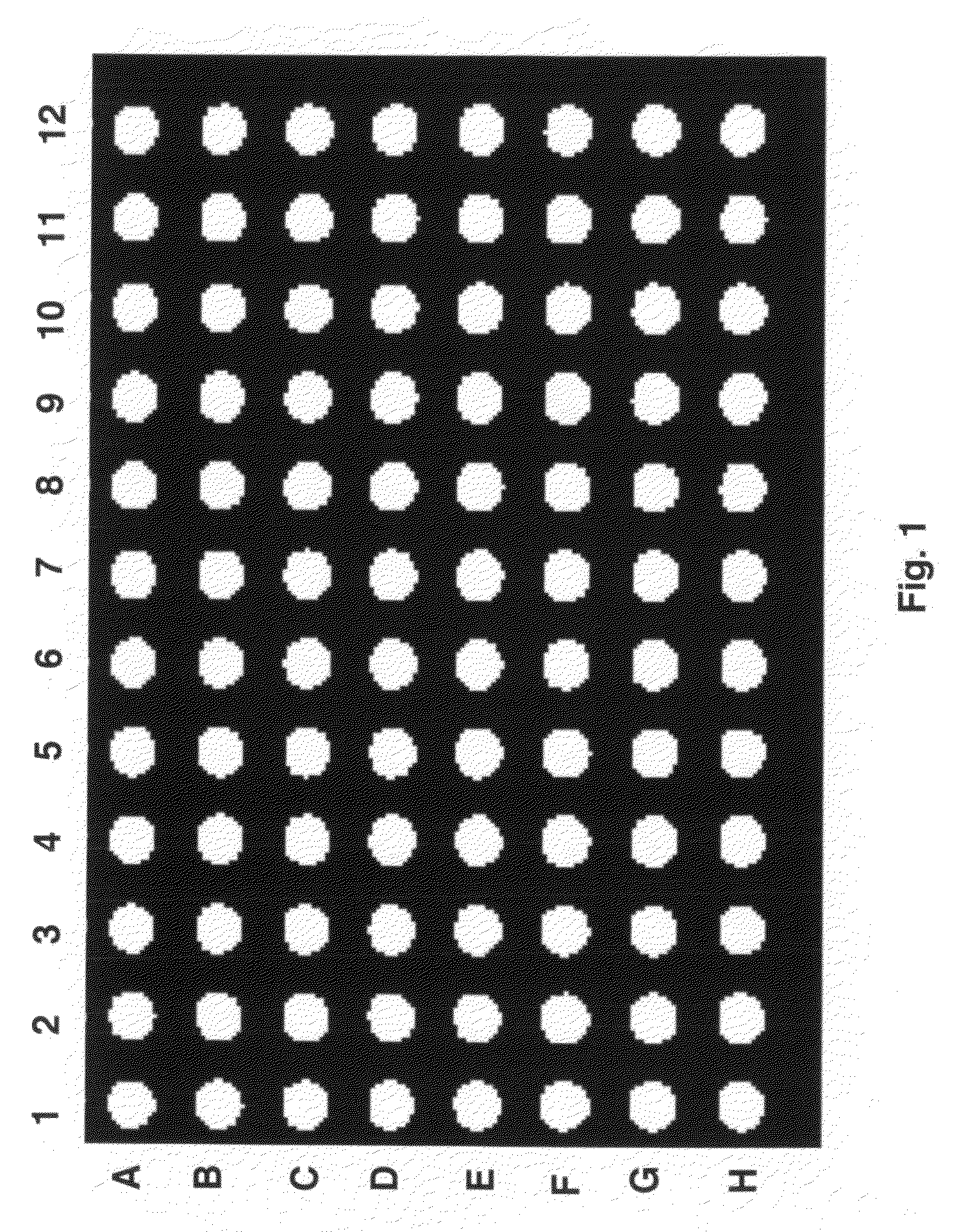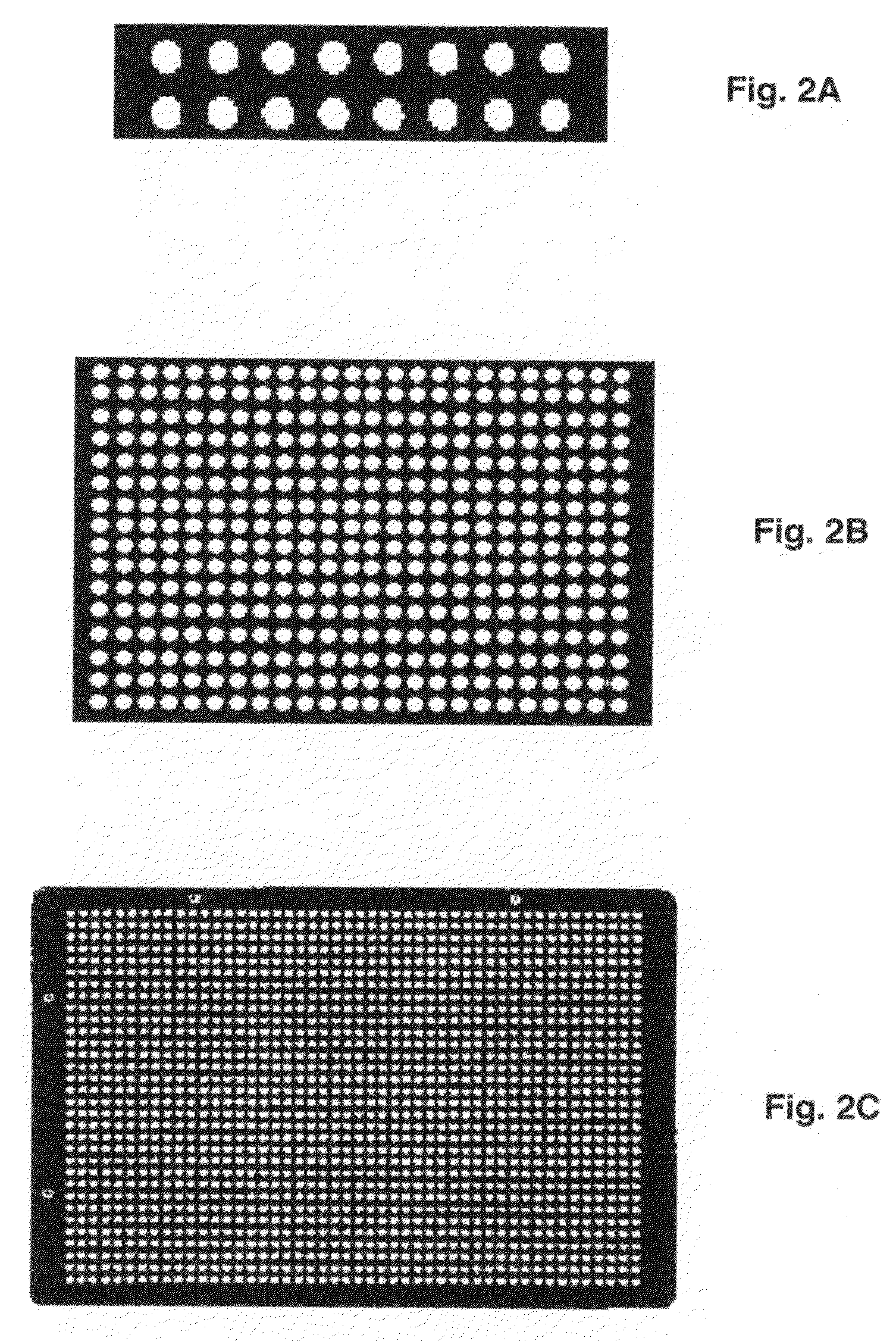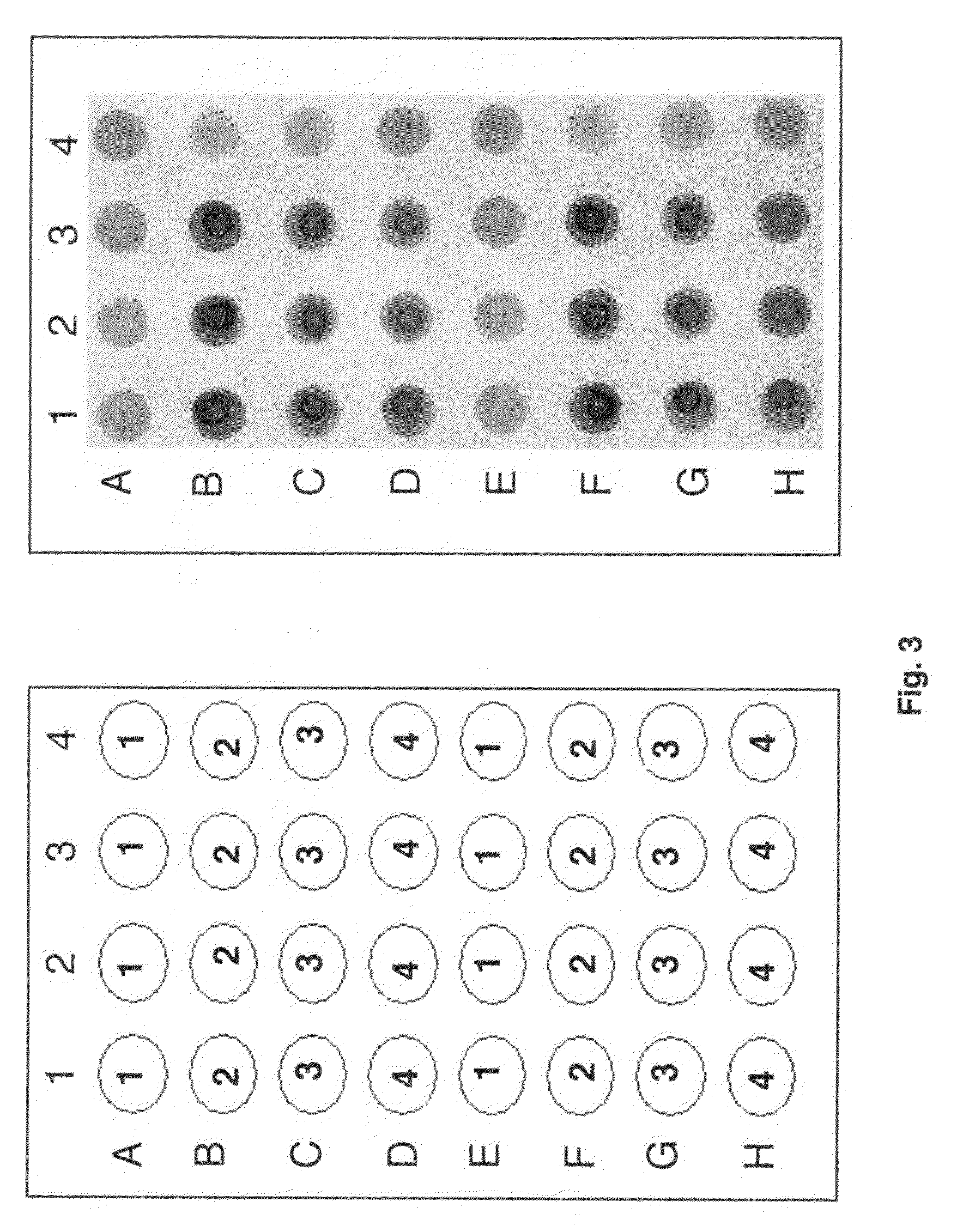Immunologic assay for detection of autoantibodies to folate binding protein
a technology of autoantibodies and folate, which is applied in the field of immunology, can solve the problems of increasing the risk of one fetus with this complication, unable to account for the 70 percent decrease in the incidence of this birth defect, and the incidence of neural tube defects
- Summary
- Abstract
- Description
- Claims
- Application Information
AI Technical Summary
Benefits of technology
Problems solved by technology
Method used
Image
Examples
example 1
Testing of an ELISA-Based Assay with Folate Binding Protein (Folbp) from Human, Mouse and Cow
[0033]Folbp were obtained from human, mouse and cow. The human folbp was isolated from human placenta as described previously (20) and was made available for testing by Dr. Sheldon P. Rothenberg. Both the mouse folate-binding proteins (Orthoclinical Diagnostics, Raritan, N.J.) and cow folate-binding proteins (Sigma Aldrich, St. Louis, Mich.) were obtained commercially. Sera for preliminary tests were graciously donated and had been previously tested in a published radiological method to detect autoantibodies (17). Results of this preliminary test indicated that the ELISA based assay was functional and demonstrated that all proteins tested could be utilized as probes for folate-binding proteins autoantibodies (FIG. 3).
example 2
Analysis of Human Serum for Folbp Autoantibodies
[0034]Serum samples were obtained from women during mid-gestational pregnancy and the samples were tested to identify presence, absence and relative abundance of folate-binding proteins autoantibodies in them.
[0035]For the fabrication of microarray plates, glass 96-well microarray plates were purchased commercially (Precisions Lab Products, Middleton, Wis.) for array fabrication. Briefly, using glass wash chambers the microarray plates were rinsed thrice with Milli-Q Ultrapure Water (Millipore Bilerica, Mass.). The slides were then rinsed thrice in 100% ethanol, followed by rinsing twice in toluene. A 1% solution of (3-glycidoxypropyl)trimethoxysilane in toluene was prepared fresh for surface modification to the silica microarray plate surface. Attachment of the monolayer was allowed to proceed overnight (14-16 hours). The slides were then rinsed twice in toluene, followed by rinsing twice in 100% ethanol. Slides were then dried under ...
example 3
Preliminary Analysis of Human Serum for Folbp Autoantibodies
[0041]In order to test the assay under clinical conditions, 40 sera samples were obtained for testing as mentioned earlier. Arrays samples were obtained from women in mid-pregnancy from 16 to 45 years of age. All samples were obtained from the California Birth Defects Monitoring Program with informed consent. Arrays and samples were prepared as described above and tested in duplicate. This analysis allowed estimation of the assays sensitivity and reproducibility through the use of standard dilutions of the medium titer positive control sample (FIGS. 4A-4D). Results indicated that 1 serum sample tested positive (#9) for autoantibodies and 5 sera tested intermediate. This latter group was characterized by 1 high-intermediate titer (#4) (between 1:2 to 1:4) and 4 low-intermediate titers (#6, 10, 17, 19) (between 1:4 to 1:8) when compared to the standard dilution of the medium titer control serum diluted from 1 to 1:64. As indi...
PUM
| Property | Measurement | Unit |
|---|---|---|
| pH | aaaaa | aaaaa |
| volumes | aaaaa | aaaaa |
| pH | aaaaa | aaaaa |
Abstract
Description
Claims
Application Information
 Login to View More
Login to View More - R&D Engineer
- R&D Manager
- IP Professional
- Industry Leading Data Capabilities
- Powerful AI technology
- Patent DNA Extraction
Browse by: Latest US Patents, China's latest patents, Technical Efficacy Thesaurus, Application Domain, Technology Topic, Popular Technical Reports.
© 2024 PatSnap. All rights reserved.Legal|Privacy policy|Modern Slavery Act Transparency Statement|Sitemap|About US| Contact US: help@patsnap.com










